Email subscribers who have come through an advanced sign-up or welcome program can have email open rates more than 40 percent and up to a 10 percent increase in response rates. Correctly managing your email opt-in process is very important to a successful welcome program. When email marketing is done correctly, it will increase response rates, enhance your brand reputation, and even increase the possibility of customers becoming evangelists for your brand.
Five Steps For A Successful Email Welcome Program:
1. Make sign-up easy and obvious. Don’t make people search your site for a place to enter their email address. Make it clear and concise and above the fold (for the average screen size and resolution). Be descriptive in the language used at this stage. Incentivize: think about including an offer; however, I would recommend testing the effectiveness of this.
2. Capture simple data at the first stage. Ask quick and relevant data capture questions at first. Avoid long-winded, irrelevant (boring) questions. Always ask yourself why you are asking for this data and how you are going to use it? Personalization? Analysis? Or “just because it might be interesting”?
3. Consider double opt-in confirmation email. The most common question I’m asked is “Why should we use double opt-in?” The reason is because it builds an inbox relationship. People have to open the email, read the email, and click on the email. It also gives you the opportunity to remind email subscribers to add your “From” address to their whitelist or address book to ensure future delivery of your email to the inbox rather than the junk folder. This is the first email new subscribers receive from you – better make it a good one!
4. Develop a preference page. After subscribers are active and fully opted in, give them the opportunity to provide preference data. You can then use this data to segment your list to send future email communications that are timely and relevant.
5. Test! At every stage of the email welcome program, you should always include customer service-type information, such as whitelists, incentives, calls to action, e-newsletters, and social and viral elements. This will encourage more email opt-ins. It also gives people the chance to invite friends to sign up, and the chance to be social.
Finally, we’re big advocates for A/B split and multivariate testing. Why not test an incentivized sign-up versus a non-incentivized sign-up? This will allow you to analyze if offering the discount, which affects your bottom line, is actually necessary. You can also test the subject line on the confirmation email and welcome emails.
